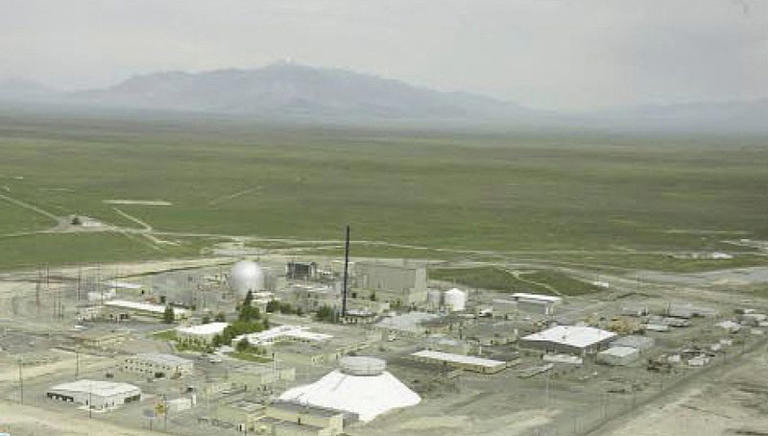solar projects Idaho, US nuclear test sites, renewable energy, Department of Energy, Idaho National Laboratory, solar power, clean energy, battery storage, Cleanup to Clean Energy program, sustainable energy
Discover how the U.S. Department of Energy is transforming former nuclear test sites in Idaho into major solar power hubs. Learn about the new solar projects at the Idaho National Laboratory, part of a broader initiative to promote renewable energy and achieve clean electricity goals by 2035.
In a significant move towards sustainable energy, the U.S. Department of Energy (DOE) has announced the development of two major solar power projects on lands in Idaho previously used for nuclear reactor testing. These projects mark the beginning of a broader initiative aimed at transforming former nuclear test sites into clean energy hubs across five states.

Transitioning from Nuclear to Solar
The Idaho National Laboratory (INL), a site historically known for its pivotal role in nuclear research and development, is now set to become a beacon of renewable energy. Since the Cold War, more than 50 reactors have been constructed at INL, including the Navy’s first prototype nuclear propulsion plant. The site has also been instrumental in exploring methods to manage radioactive waste. Now, in a complete turnaround, NorthRenew Energy Partners and Spitfire Energy will install solar arrays with battery storage on this very land.
Significance of the Initiative
The federal government is not only the largest energy consumer in the U.S. but also the biggest land manager. This initiative is crucial because it leverages federal lands to foster renewable energy development, which can significantly contribute to national clean energy goals. The two projects at INL are part of the Cleanup to Clean Energy program, announced last year, which aims to utilize 70,000 acres of DOE land in Idaho, New Mexico, Nevada, Washington, and South Carolina for renewable energy projects.
The significance of this initiative is multifaceted. Firstly, it aligns with President Joe Biden’s ambitious clean electricity goals, which aim for the U.S. grid to run entirely on clean energy by 2035. Secondly, it transforms lands previously dedicated to nuclear testing and research into productive clean energy sites, thereby addressing both historical environmental concerns and future energy needs.
By the Numbers
The planned solar projects at INL are substantial. Combined, they will generate 400 megawatts (MW) of solar power, sufficient to power approximately 70,000 homes. NorthRenew Energy Partners will install a 300 MW solar array with battery storage, while Spitfire Energy will contribute an additional 100 MW, also with battery storage. These projects are not just significant in their capacity but also in their technological approach, integrating battery storage to ensure a steady and reliable energy supply.
The Broader Context
This initiative is part of a larger federal effort to clean up and repurpose DOE lands for renewable energy. The Cleanup to Clean Energy program aims to build the largest solar power site and other clean energy projects on these lands. This approach has several advantages:
- Utilization of Existing Infrastructure: Many DOE sites already have established infrastructure, such as power lines and roads, which can be repurposed for renewable energy projects.
- Environmental Remediation: By converting former nuclear sites into clean energy hubs, the program addresses environmental cleanup while promoting sustainable energy.
- Economic Benefits: These projects can provide economic benefits to local communities through job creation and investment in renewable energy infrastructure.
Community and Environmental Impact
The transformation of INL into a solar power hub has significant community and environmental implications. It represents a shift from the legacy of nuclear research and testing to a future focused on sustainability and clean energy. This transition not only helps in reducing carbon emissions but also sets a precedent for the use of other federal lands.
Moreover, involving community leaders and private sector partners in this initiative ensures that the projects are aligned with local needs and contribute to the broader goal of energy independence. As U.S. Secretary of Energy Jennifer Granholm stated, “Working closely with community leaders and private sector partners, we’re cleaning up land once used in our nuclear deterrence programs and deploying the clean energy solutions we need to help save the planet and strengthen our energy independence.”
Future Prospects
The success of these projects at INL could pave the way for similar developments across other DOE lands. With the potential to host the largest U.S. solar power site, these lands could significantly contribute to the national renewable energy landscape. The integration of battery storage technology further enhances the reliability and efficiency of these solar power projects, making them a robust solution for future energy needs.
Conclusion
The launch of these solar projects in Idaho is a landmark moment in the U.S. transition to renewable energy. It demonstrates how lands once dedicated to nuclear research and defense can be repurposed for clean energy production, contributing to both environmental sustainability and energy security. As the Cleanup to Clean Energy program progresses, it holds the promise of transforming the energy landscape, supporting national clean energy goals, and setting a powerful example of innovation and resilience.
This initiative underscores the potential of federal lands to play a pivotal role in the clean energy future, turning sites of historical significance into beacons of progress and sustainability.
Read More-